Do you have back discomfort in your lower back? If you have, you are aware of how debilitating it can be. It may appear simple to take medication to relieve pain, but with prescription medication overuse becoming a national epidemic, many people with lower back pain are looking for a more straightforward alternative.
According to a study published in BMC Health Services, physical therapy has been shown to minimize total health costs associated with pain management and to prevent habit-forming reliance on prescription medications.
In fact, your physical therapist will not only help relieve your lower back pain during your sessions, but they can also provide simple pain-relief strategies that you can carry into your daily life.
Our clinic has put together some of the best pain-reducing techniques that you can undertake both at home and during physical therapy. Keep reading to learn what they are, and give us a call when you’re finished to set up your physical therapy appointment.
1. Pay attention to your hamstrings.
While not typically considered by back pain patients, your hamstring muscles can influence whether or not your lower back joints become over-stressed. To compensate for the tightness in the backs of your upper thighs, your lower back has to work extra hard. Stretching your hamstrings lengthens those muscles, which can assist to relieve pain in your lower back, especially if it’s in spasm.
A physical therapy session can assist you in identifying precise stretches for your hamstring muscles and explaining how the two muscles interact. In the meanwhile, try bending over twice a day and reaching for your toes. Reach down without straining, and avoid locking your knees. If you experience any pain during the workout, stop and consult your physical therapist about other hamstring lengthening activities.
2. Alternate between ice and heat remedies.
Using hot and cold compresses or packs alternately on your lower back can assist to relieve pain. It is not required to switch every time if you prefer one remedy over the other, but alternating the two extremes can often help provide a broader variety of benefits.
Heat increases circulation, and when your body receives more blood, your body’s healing properties are activated in the bloodstream. Hot compresses and packs also help to relieve pain by blocking the painful “signals” that go from your lower back nerves to your brain. Cold packs, on the other hand, can help by numbing pain, stopping spasms, and reducing swelling in the affected area.
These ice and heat therapies will be applied by experts during physical therapy. Your physical therapist can also advise you on the best heat and cold treatments for your ailment. Ice packs and heating pads, in general, are fantastic all-around solutions because they are effective, affordable, and widely available.
3. Find a natural balance between your rest and exercise.
In some circumstances, bed rest is a popular first-line treatment for lower back pain. This is especially true if the pain is caused by an injury or re-injury. Resting while applying ice packs is a tried-and-true method of lowering swelling in the first few days. Moving around, on the other hand, is a much better treatment for persistent lower back pain than lying down. Physical activity releases endorphins, which have antidepressant and pain-relieving qualities.
Of course, before talking with your physical therapist, you should not overdo your workouts! Keep it easy by going for a small walk or doing some housework to limber up your back and produce those beneficial endorphins. Wear a brace to support your lower back as you move if it helps to relieve your pain.
Physical therapy is a useful form of exercise. It provides the benefits of exercise as well as the supervision of an expert to ensure that you are employing the right technique and remaining wise. Your physical therapist will be able to advise you about moves that could cause re-injury and will work with you on both flexibility and strength.
These exercises are meant to build up the muscles that support your spine, in order to ease pain on your lower back. They also help provide greater range-of-motion as you work through that back stiffness.
Ready to start eliminating your pain?
Contact our office now to book a consultation if you’re not sure where to start when it comes to addressing your lower back discomfort. You can begin learning how to make basic modifications that will reduce the severity and frequency of your lower back pain episodes during your first session. Our caring physical therapists will be there for you every step of the way, ensuring that you achieve all of your objectives on your path to long-term pain relief!


